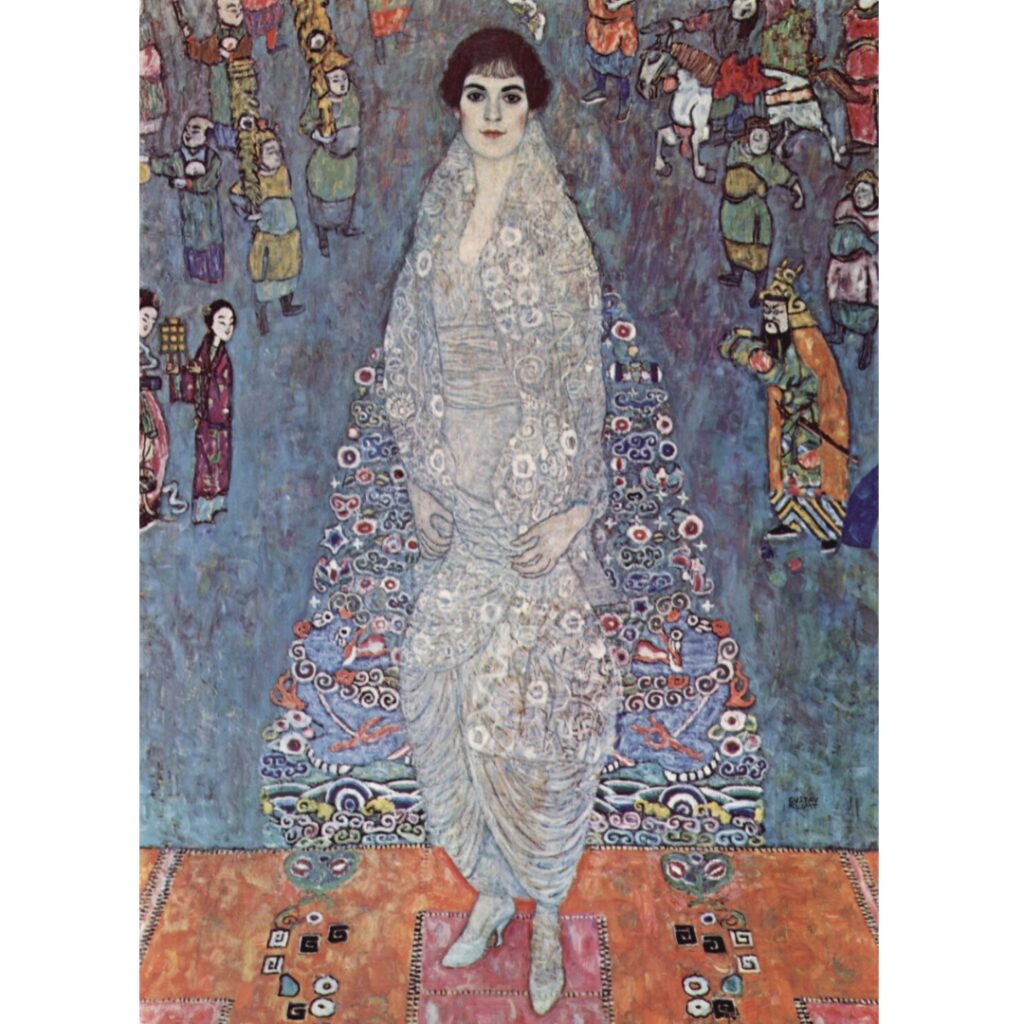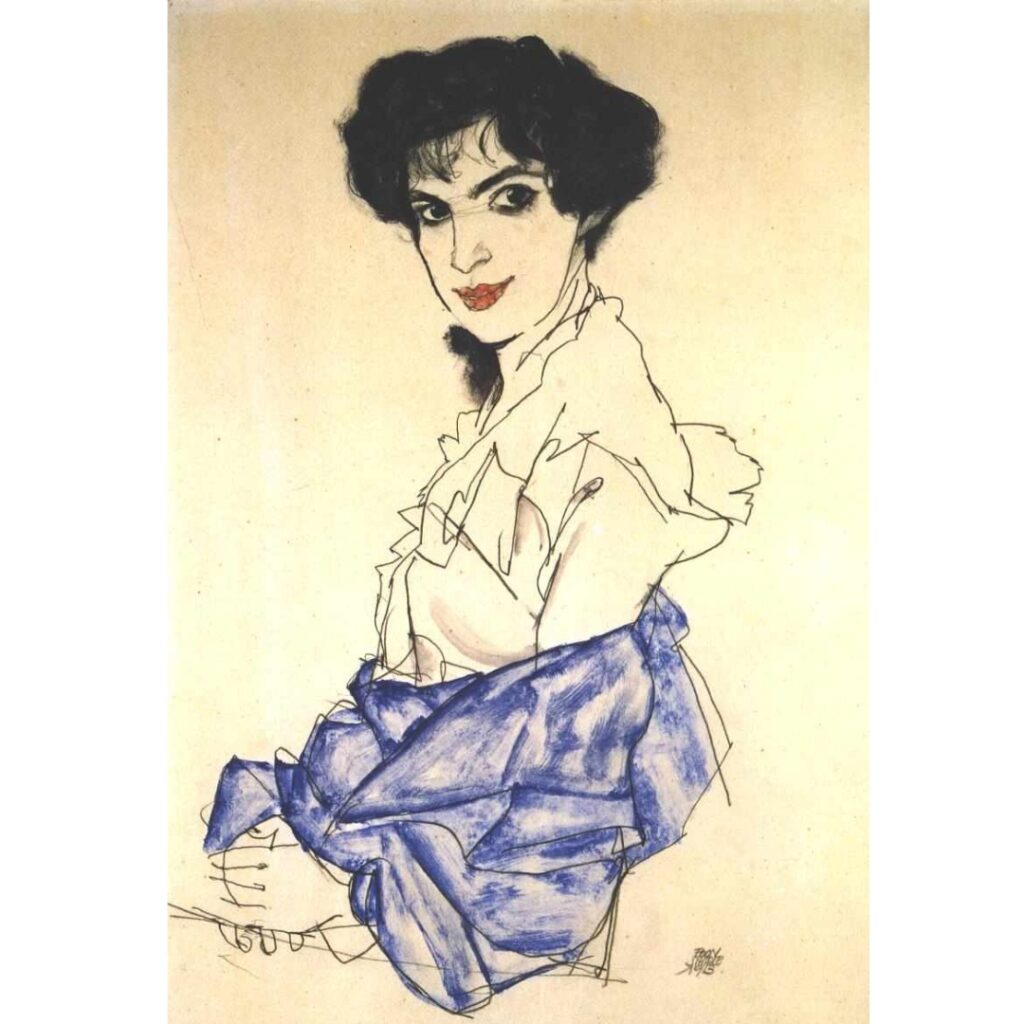Some stories simply refuse to stay quiet, no matter how many times history tries to bury them. Elisabeth Lederer’s is one of them; a tale of beauty, power, art, and survival that links Vienna’s Secession era to the modern luxury world. If her portrait by Gustav Klimt feels haunting, it’s because her life was exactly that: elegant on the surface, brutal underneath.
Vienna’s Most Cultured — and Wealthiest — Industrial Family
Elisabeth Lederer was born in 1894 into a family that shaped turn-of-the-century Vienna. The Lederers were industrialists and the second-richest family in Austria, surpassed only by the Rothschilds. With wealth came taste, and with taste came the inevitable gravitational pull of the Vienna Secession.

Serena Pulitzer Lederer, Elisabeth’s Mother, By Gustav Klimt
Serena Lederer, Elisabeth’s mother, belonged to the same artistic circle as Alma Mahler. Their home was a gathering place for ideas, artists, and ambition. No wonder Gustav Klimt was practically a family friend.
Between 1914 and 1916, he painted Elisabeth in a full-length portrait dripping in iridescent fabrics and fin-de-siècle mystery. A painting that would end up surviving war, fire, and looting, and eventually become one of the most expensive works of art ever sold.
When the Nazis Arrived, Identity Became a Weapon
After the 1938 Anschluss, the Lederers’ wealth, culture, and influence meant nothing. Their vast art collection — one of the greatest private collections of Klimt — was systematically seized by the Nazis.

Elisabeth Lederer by Gustav Klimt. The painting was sold for $236.4 million, making it one of the priciest artworks ever to hit the global market
But here is the dark irony:
While the masterpieces were stolen, the Nazi authorities left behind the Lederer family portraits, dismissing them as “too Jewish to be worth stealing,” according to the National Gallery of Canada. Even in theft, antisemitism shaped the hierarchy.
Faced with deportation, Elisabeth made a decision that would alter everything: she claimed that Gustav Klimt, who had died in 1918, was her biological father.
This claim, combined with bureaucratic intervention from a former brother-in-law inside the Nazi administration, reclassified her as “half-Jewish” rather than fully Jewish. A legal trick of survival. A fragile shield. And one of the few reasons she remained in Vienna until her death from illness in 1944.
The Portrait’s Wild Journey: Looted, Lost, Saved, Sold
The portrait of Elisabeth was looted like the rest of the family’s masterpieces. It was stored in Schloss Immendorf, a castle packed with stolen art. A fire nearly consumed it, but somehow, miraculously, the painting survived.
In 1948, it was restituted to Elisabeth’s brother, Erich Lederer.
Decades later, it entered the collection of billionaire Leonard A. Lauder, the cosmetics heir behind Estée Lauder Companies. Lauder, who died in 2025 at age 92, left behind a collection worth more than $400 million, and Elisabeth’s portrait was one of its crown jewels.
In 2025, the painting sold at auction for $236.4 million, making it one of the priciest artworks ever to hit the global market. Proof that legacies sometimes bloom long after the people in them are gone.
The Woman Behind the Canvas

Elisabeth Lederer by Austrian Artist, Egon Schiele
So who was Elisabeth Lederer, beyond the portrait and the survival tactic?
She was a woman raised among Klimts, operas, salons and Viennese modernism. A woman who lived with privilege until the day privilege evaporated. A woman who understood that identity is sometimes your only currency. Her story reminds us that beauty can hide extraordinary strength, and that some lives are painted twice: once by the artist, and once by history.
FAQ
| Who was Elisabeth Lederer? | A Viennese heiress born in 1894 into one of Austria’s wealthiest families. Gustav Klimt immortalised her in a famed portrait painted between 1914 and 1916. |
| Why is the Elisabeth Lederer story significant? | Because it intertwines art, wealth, Nazi looting, and a dramatic survival strategy: Elisabeth claimed Klimt was her biological father to avoid deportation under racial laws. |
| What happened to the Lederer art collection during WWII? | The Nazis seized most major works. Family portraits, however, were left behind as “too Jewish to be worth stealing,” according to the National Gallery of Canada. |
| Who owned the portrait after the war? | After restitution, it eventually entered the collection of billionaire Leonard A. Lauder, who died in 2025, leaving a $400M collection. |
| How much did Klimt’s portrait of Elisabeth Lederer sell for? | It sold in 2025 for $236.4 million, becoming one of the most expensive modern artworks ever sold. |
